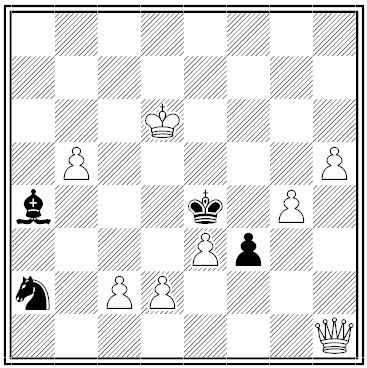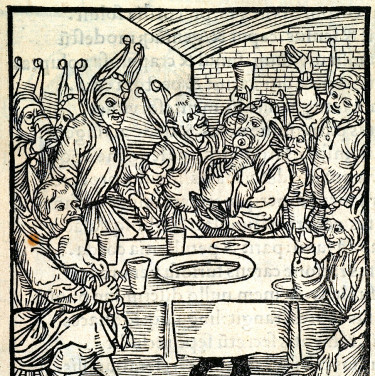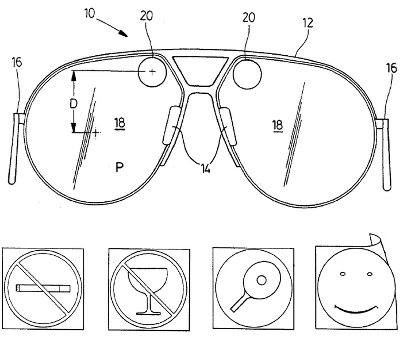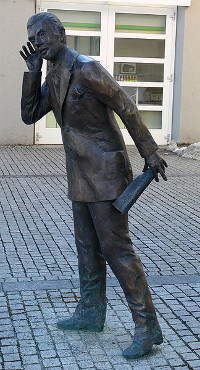
By Philip Hamilton Williams, Evening News and Post, 1895. White to mate in two moves.

By Philip Hamilton Williams, Evening News and Post, 1895. White to mate in two moves.

fress
v. to eat often or in large quantities
In 1763 an anonymous Londoner published The Reign of George VI, 1900-1925, a forecast of the remote 20th century. Among other things, the author predicted that George’s greatest military victory would come before the gates of Vienna in May 1918, the actual date of Germany’s Spring Offensive of World War I:
Peter immediately raised the siege, and, drawing up his forces in the plains of Vienna, prepared to fight the King of England, who was also engaged in the same employment. The Russian army had a superiority of above sixty thousand men, consequently their numbers were two to one; but no dangers could depress the heart of George. Having, with moving batteries, secured the rear and wings of his army from being surrounded, he placed his artillery in the most advantageous manner; and dividing his front into two lines, at the head of the first he began the attack, after his artillery had played on the enemy an hour, with great success. The Russian infantry, animated by the presence of their Czar, under whom they had so often conquered, repulsed him with some loss. The King hereupon made a second and still more furious attack, but yet without success. At that critical moment the Duke of Devonshire, who commanded his left wing, sent for immediate assistance, as he was hard pressed by the superior numbers of the enemy. George flew like lightning to his weakened troops, and placing himself at the head of six regiments of dragoons, made such a furious attack on the eager Russians as threw them into disorder, and following his advantage, pushed them with great success.
Properly speaking this isn’t science fiction, as the author envisions no technological advances: Sail warships still fight naval battles; East Indiamen travel to India and Indonesia; and European nations communicate by roads and trade using river barges.
But here’s an interesting detail: “By the year 1920 there were 11,000,000 of souls in the British-American dominions [of North America]: they were in possession of perhaps the finest country in the world, and yet had never made the least attempt to shake off the authority of Great-Britain.” Writing in 1763, the author had considered the possibility of a revolt in the colonies, but rejected it: “The constitutions of the several divisions of this vast monarchy were admirably designed to keep the whole in continual dependence on the mother country. … The multiplicity of governments which prevailed over the whole country rendered the execution of such a scheme [combined rebellion] absolutely impossible.”
In 1629, Joan Norkot of Hertfordshire died in a singularly impossible way:
No one had entered the house since she had gone to bed, and Joan’s sister Agnes and her husband, John Okeman, had lain in the outer room together with John’s mother, Mary. John was acquitted and his pregnant wife permitted to live, but Joan’s husband Arthur and her mother-in-law, each protesting their innocence, were hanged.
This account was found among the papers of Sir John Maynard, who died in 1690. When it was published in The Gentleman’s Magazine in July 1851, it made a sensation chiefly because it reported that Joan’s month-old corpse had been exhumed and itself accused the killers. “The appellers did touch the dead body, whereupon the brow of the dead, which was of a livid or carrion colour (that was the verbal expression in the terms of the witness) began to have a dew or gentle sweat [which] ran down in drops on the face, and the brow turned and changed to a lively and fresh colour, and the dead opened one of her eyes and shut it again, and this opening the eye was done three several times. She likewise thrust out the ring or marriage finger three times and pulled it in again, and the finger dropt blood from it on the grass.” But setting that aside, it’s hard to understand what happened to Joan. No motive was adduced in the murder, and no one has explained how it was accomplished. Who killed her, and how?

There once were some learned M.D.’s,
Who captured some germs of disease
And infected a train,
Which, without causing pain,
Allowed one to catch it with ease.
— Oliver Herford
In the early 1980s, William Chamberlain and Thomas Etter programmed a computer to write English prose at random. “The specifics of the communication in this instance would prove of less importance than the fact that the computer actually appeared to be communicating,” Chamberlain wrote. “Quite simply: what the computer said would be secondary to the fact that it said it correctly.”
Written in BASIC, RACTER (short for “raconteur”) ran on 64K of RAM. Its output, which strung together individual words according to programmed structures and rules of composition, was largely gibberish, but it could produce startling flashes of apparent lucidity:
More than iron, more than lead, more than gold I need electricity. I need it more than I need lamb or pork or lettuce or cucumber. I need it for my dreams.
Bill sings to Sarah. Sarah sings to Bill. Perhaps they will do other dangerous things together. They may eat lamb or stroke each other. They may chant of their difficulties and their happiness. They have love but they also have typewriters. That is interesting.
A crow is a bird, an eagle is a bird, a dove is a bird. They all fly in the night and in the day. They fly when the sky is red and when the heaven is blue. They fly through the atmosphere. We cannot fly. We are not like a crow or an eagle or a dove. We are not birds. But we can dream about them. You can.
A tree or shrub can grow and bloom. I am always the same. But I am clever.
And even the gibberish could be deep. RACTER’s first published work, Soft Ions, appeared in OMNI in November 1981. Its conclusion included some apparent nonsense about eating a leotard that was replenished by hordes of commissioners. But then the program reflected: “Is that thought understandable to you? … I wonder. Yet a leotard, a commissioner, a single horde, all are understandable in their own fashion. In that concept lies the appalling truth.”

Resolving to improve yourself is easy; remembering your resolutions is hard. Faye Tanefsky came up with a novel solution in 1991: a pair of glasses imprinted with a subliminal message. Each lens bears a simple reinforcing image that’s in view all day long:
It has been found that when the glasses are first put on, the subject will notice the message images, momentarily. The message means will appear merged as a single image, focussed more or less centrally between the two eyes. After a few seconds, for example, ten to twenty seconds in the average case, the subject is no longer conscious of the image and the image essentially disappears.
The images, which are supplied on decals, might include a resolution not to drink or smoke, an inspiring visualization in sports, or a happy face to combat an inferiority complex. “While the message is continuously in front of the eyes of the subject, the subject is not conscious of the existence or presence of the message, and can continue whatever activities he or she is engaged in without interference or distraction.”

Is hearing silence just a matter of inferring an absence of sound from one’s failure to hear? No, a wounded soldier who wonders whether he has gone deaf can hear silence while being neutral about whether he is hearing silence. He hopes he is hearing silence but neither believes nor disbelieves that he is hearing silence.
— Roy Sorensen, Seeing Dark Things, 2008
When director George Pal first came to the United States from Hungary, animator Walter Lantz helped him obtain U.S. citizenship. As a tribute to their friendship, Pal inserted Woody Woodpecker into most of his films:
In Doc Savage (1975), Pal’s last film, the reference is subtle. No woodpeckers appear in the film, but near the end an elderly woman is helped across the street by a Boy Scout. The woman is Grace Stafford, Lantz’s wife — and the voice of Woody Woodpecker.
“Bored silly” one day, science fiction author Damon Knight and his wife invented logogenetics, “the new science of selling stories without actually writing”:
As an example, Knight combined A.E. van Vogt’s The World of Null-A with Ray Bradbury’s “The Golden Apples of the Sun” to produce The World of Null-Apples, by A. Ray Van Vogtbury:
Gosseyn moved, but around the door.
‘Swallow the pills.’ In the sky with great desperate coming-in, danger flowering unreal whistlings, Prescott quietly said, ‘From the women that saw it, helicopters will blizzard.’ The hotels, the private people, cities that rose to strange power. Warm, strangely, with easy pink picture faces, because the race of bound men would sound mysterious. ‘You opposed the assault, man!’
Murder. Two supposed chocolate Gosseyn malteds. He smiled curtly, for the mute problem would slowly, reluctantly untangling, tell him the partial color acceptance. It again was a picture of a mind, dark, closer to sanity, one uneasy white reverie shining down. …
Logogenetic writing seldom makes sense, but Knight points out that it’s ideal for writing little books to go with exhibitions of ultramodern art. And he found it particularly entertaining to combine how-to articles from Woman’s Day:
With a whisk knife, sweep 3/4 inch under crust. Vacuum 1 cup grated pedals or rugs. Spread seats in trunk; put dirt on floor. Bake 1 tablespoon moderate detergent, 325° F., in hot bucket. Break upholstery apart, and serve.
UPDATE: A reader tells me that computer algorithms using Markov chains have been used similarly to marry texts — here’s Alice in Wonderland combined with Genesis and Revelations.